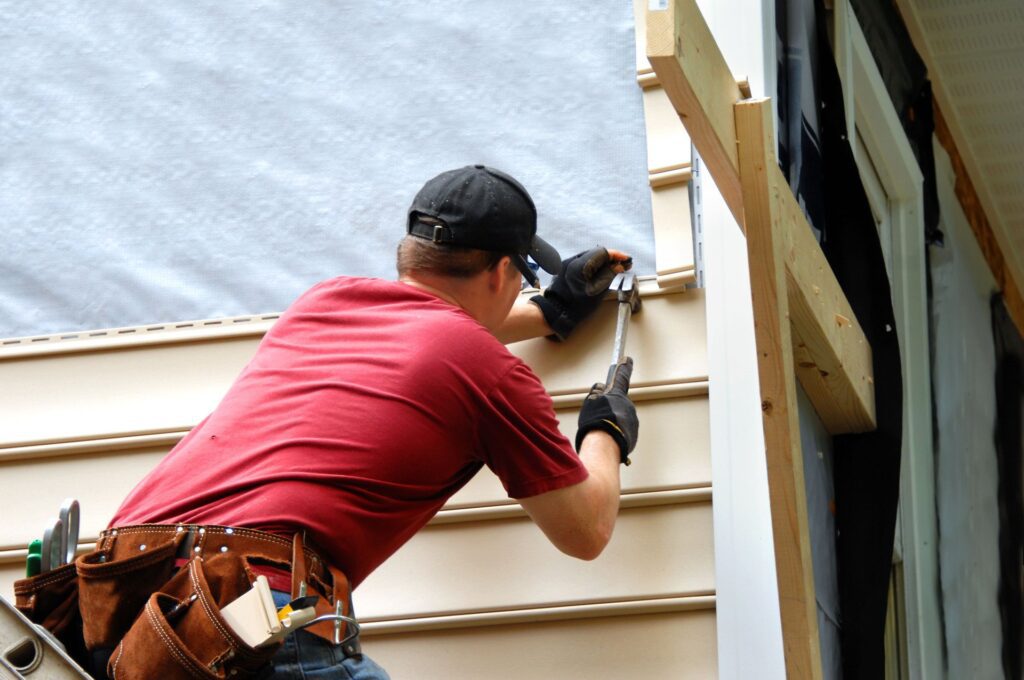Signs It's Time to Replace Your Home's Siding

Siding is more than just a design feature—it plays a crucial role in protecting your home from the elements and keeping energy costs down. Over time, even the best siding materials can wear out or suffer damage, affecting your home's appearance and integrity. Knowing when to replace your siding can help you avoid bigger repairs down the line and maintain your home's value.
1. Cracks, Warping, or Rotting
Visible damage is one of the most obvious signs that your siding needs replacement. Cracks, warped panels, or rotting sections can allow moisture and pests to penetrate your home’s exterior.
Why it matters:
- Moisture infiltration can lead to mold, mildew, and structural damage.
- Rotting wood siding weakens the structure and invites termites.
- Warped panels may indicate internal damage behind the siding.
Pro Tip: If you notice any bubbling under the surface, it’s often a sign that water has become trapped inside—a red flag that replacement is needed.
2. Faded or Peeling Paint
If your siding requires frequent painting or is showing signs of excessive fading, it's likely past its prime. High-quality siding should hold its color and finish for at least 8–10 years.
Why it matters:
- Frequent painting = increased maintenance costs
- Faded siding diminishes curb appeal and indicates UV damage
- Peeling paint may be a symptom of deeper moisture issues
When siding no longer holds paint or color, it's time to consider newer, low-maintenance materials.
3. High Energy Bills
An unexpected rise in heating or cooling costs could mean your siding is no longer providing adequate insulation. Gaps, cracks, or damaged siding can let drafts in and make your HVAC system work harder.
What to watch for:
- Drafts near walls or windows
- Difficulty maintaining consistent indoor temperatures
- Noticeably higher utility bills without explanation
Upgrading to modern insulated siding can improve energy efficiency and lower your bills long-term.
4. Mold, Mildew, or Fungus Growth
If you spot green or black spots on your siding—especially near the seams—it could mean water is seeping in. Mold and mildew thrive in moist environments and can lead to serious health and structural issues.
Key signs:
- Persistent moisture or stains that don’t wash off
- A musty smell near walls
- Discoloration that grows or spreads
Cleaning might help temporarily, but ongoing growth is a sign the siding needs replacement.
5. Interior Wall Damage
Sometimes siding issues show up inside your home. If you notice peeling wallpaper, discolored drywall, or unexplained water spots, it might be due to compromised siding letting moisture in.
Other signs include:
- Warped interior walls
- Soft or spongy spots along the baseboards
- Unusual cold spots during winter months
By the time damage appears indoors, siding replacement is often overdue.
Why Timely Siding Replacement Matters
Replacing your siding at the right time protects your home from water intrusion, improves energy efficiency, and enhances resale value. Putting off the replacement may lead to costlier repairs down the line—from damaged insulation to structural repairs.
Additional benefits of new siding:
- Boosted curb appeal
- Increased property value
- Better protection against pests and weather
- Lower maintenance requirements
Modern siding materials like fiber cement or engineered wood can last decades and offer stylish, durable finishes.



